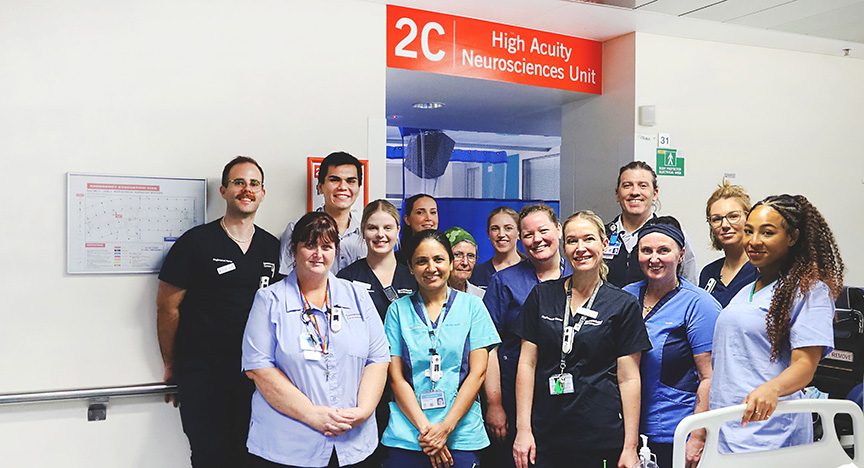
Ward 2C has a new identity for the High Acuity Neurosciences Unit (HANU), to replace the previously named High Dependency Unit with a focus on expediting the care of neuroscience patients through the HANU.
Nurse Unit Manager, Anthony Auditore says the shift was to address patient flow of external referrals for patients with high-risk needs in keeping with the staffing structure designed for high care Neuroscience patients.
“Our former HDU model was reliant on doctors for referrals and discharges which made patient flow difficult to manage. Moving to a model of care that is nurse led and designed allows our nurses to make decisions within the unit more autonomously which has improved patient flow.”
Working in collaboration with medical officers, the nurse-led model was initiated in June 2023 and officially recognised with a name change in November 2023.
All nurses participated in planning sessions to determine criteria for patient admission, length of stay, and other essential factors. A collaborative process with the medical directors of Neurosurgery and Neurology resulted in the seamless transition into the new model of care.
“This has resulted in a positive shift in staff morale by building nurses autonomy, confidence, and capability through interprofessional collaborative decision-making - especially after hours when they are the primary decision-makers,” Anthony said.
“The criteria provide clear guidelines for selecting patients, improving resource allocation and ensuring the right patients receive the right care in the right place which adds to patient safety.”
The outcome for patients is that those with specific neuroscience conditions, such as subarachnoid haemorrhages, complex brain injuries, and active seizure disorders, receive specialised and targeted care in HANU.
The criteria ensures that only those requiring specialised neuroscience care are admitted to HANU and streamlines admissions from critical care areas such as the Intensive Care Unit. In turn, this improves flow throughout the hospital by preventing avoidable delays in procedures for other patients.
Anthony said that while the current model has significantly improved patient flow and care, the unit remains open to future iterations to meet evolving healthcare challenges and changes in patient populations.